At this year's 19th Century Banjo Gathering (Banjo Collector's Gathering), Pete Ross and I presented on Levi Brown.
Our research uncovered that there was much more to Brown's life than just making banjos, which make sense when you know a little bit about existing Minstrel-Era banjos.
0 Comments
A friend and luthier, Andy FitzGibbon sent me these images of a fiddle made in Baltimore by a man name August Heck. Baltimore once had a vibrant instrument making scene, and I wondered if Heck was part of that. Heck was born in Germany in 1847 and emigrated to the United States in 1884, during the second large wave of German immigration. The first large flow came in the 1850s, after the 1848 revolution forced many liberals out of the country. In the 1880s, more than one million Germans resettled in the United States, many escaping religious prosecution and military service. Baltimore had a large German population from every wave of immigration, and German instrument makers like William E. Boucher, Jr. and C.H. Eisenbrant had very successful businesses. 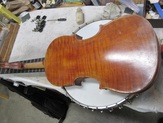 We can track Heck a bit by the locations on his labels. Violins #74 and #77 turned up with "Heckville, Indiana," while an advertisement listed him later in Valparaiso, Indiana. By 1891, he was in Baltimore and by 1900, he's listed in the Washington, D.C. census as an instrument maker. While in Baltimore, he even filed a patent. "A chin rest for violins" is patented by August Heck, of Baltimore, which is the combination with a clamp having lips for embracing the violin, of a clamping twin button whose plant of motion is at a right angle with lips. 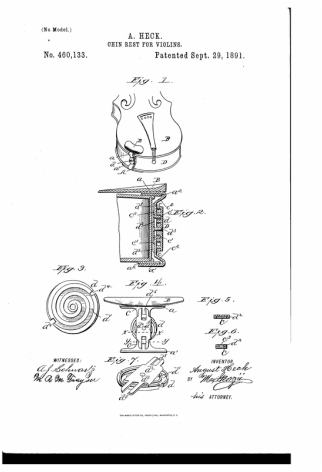 The language from the newspaper isn't too clear. Basically, his invention featured a round gear that screwed to tighten a chin rest on the top and bottom of the fiddle. Most chin rests need a little key to tighten two rods that connects the top (the chin rest) with another metal piece on the bottom of the fiddle. Industrialization meant innovation and everyone wanting to patent their million dollar idea. Thomas Edison, Alexander Graham Bell, and Nikola Tesla did have lots of good ideas that they patented, and they were rewarded for it. Thousands of others followed their lead. In the 1880s, the boom really took off when inventors no longer had to create a model of their patent. All they had to do was have an idea, a description of how it worked, and a drawing. By the end of the century, 700 to 800 patents were being filed each week. Since Heck only needed the idea and a drawing, there is no guarantee that any of these chin rests were actually ever made. Heck moved around quite a bit. He had lived in at least three states after having only been in the United States for 16 years, and seemed to be constantly chasing his fortune. From Washington, D.C., he may have moved to Los Angeles where he's listed in the 1920 census as a 73 year old man, but still an instrument maker.
|
Come in, the stacks are open.Away from prying eyes, damaging light, and pilfering hands, the most special collections are kept in closed stacks. You need an appointment to view the objects, letters, and books that open a door to the past. Archives
April 2023
Categories
All
|
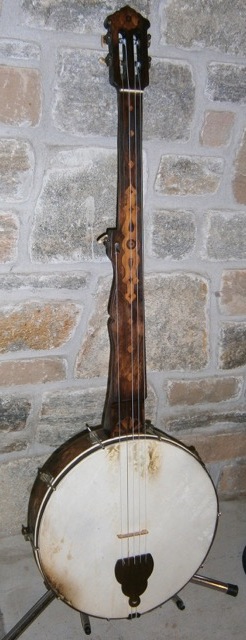
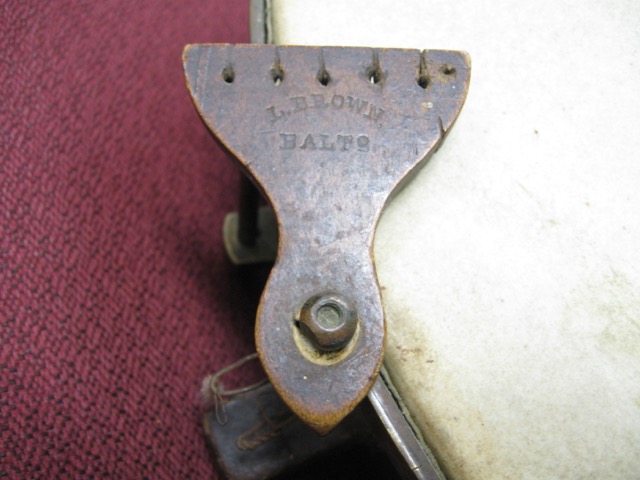
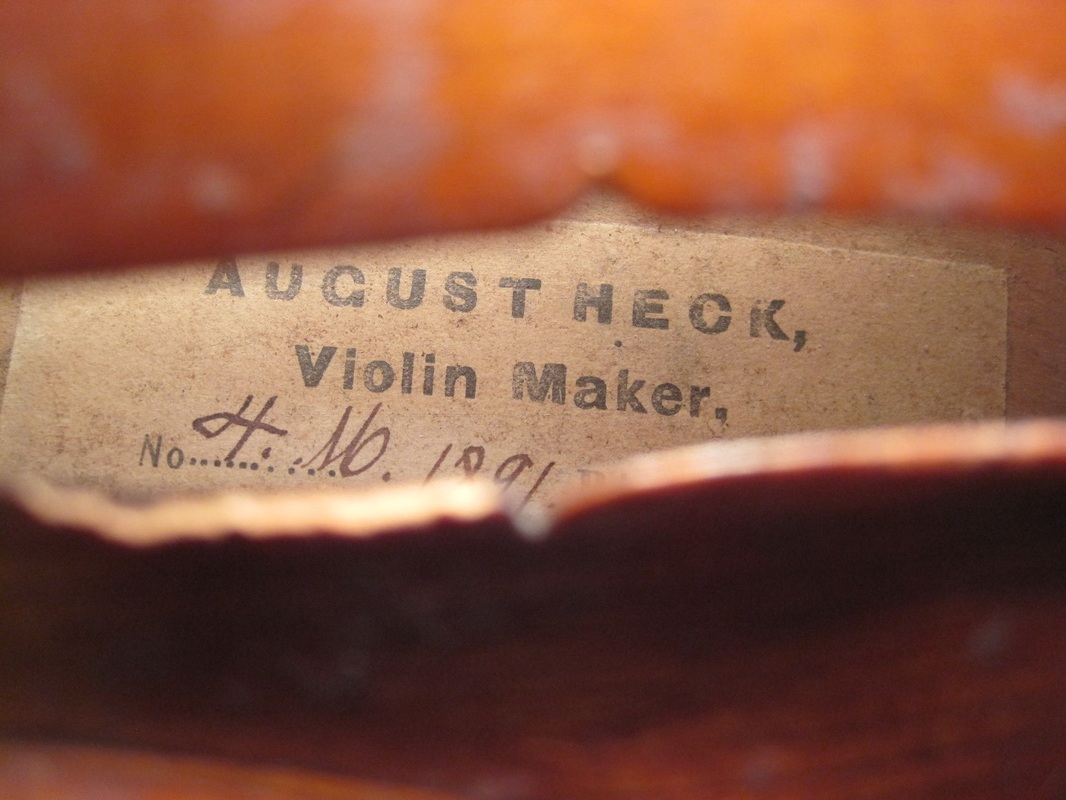
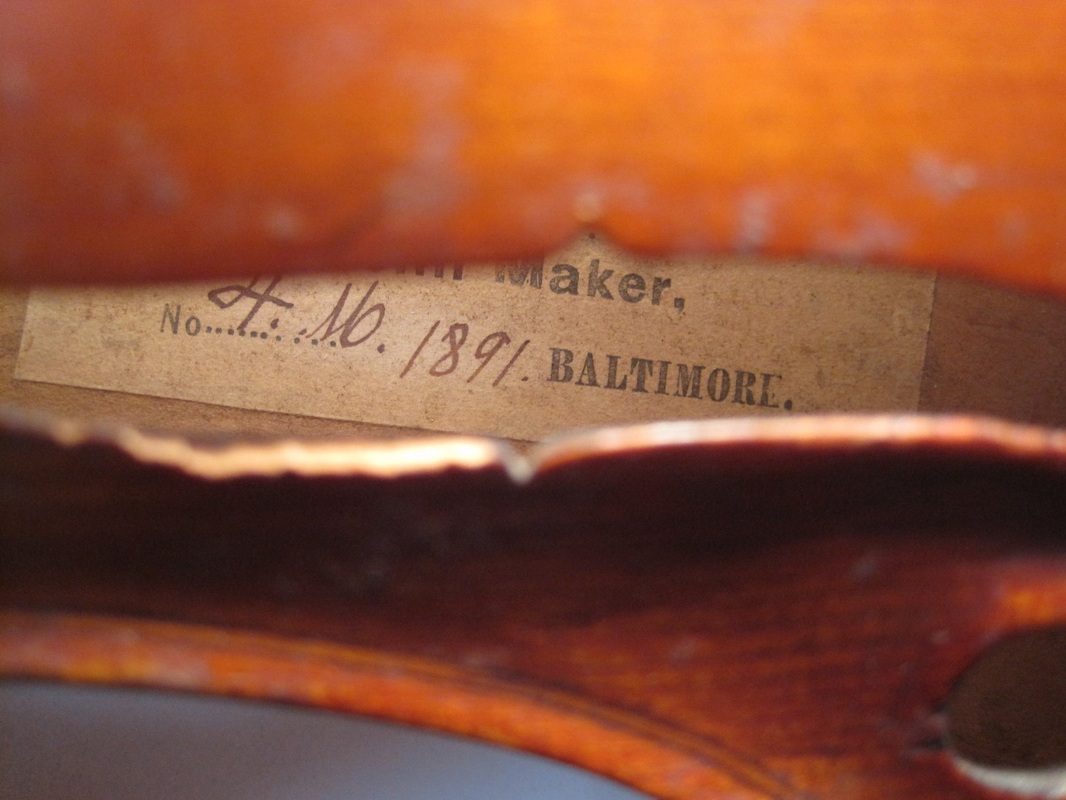

 RSS Feed
RSS Feed